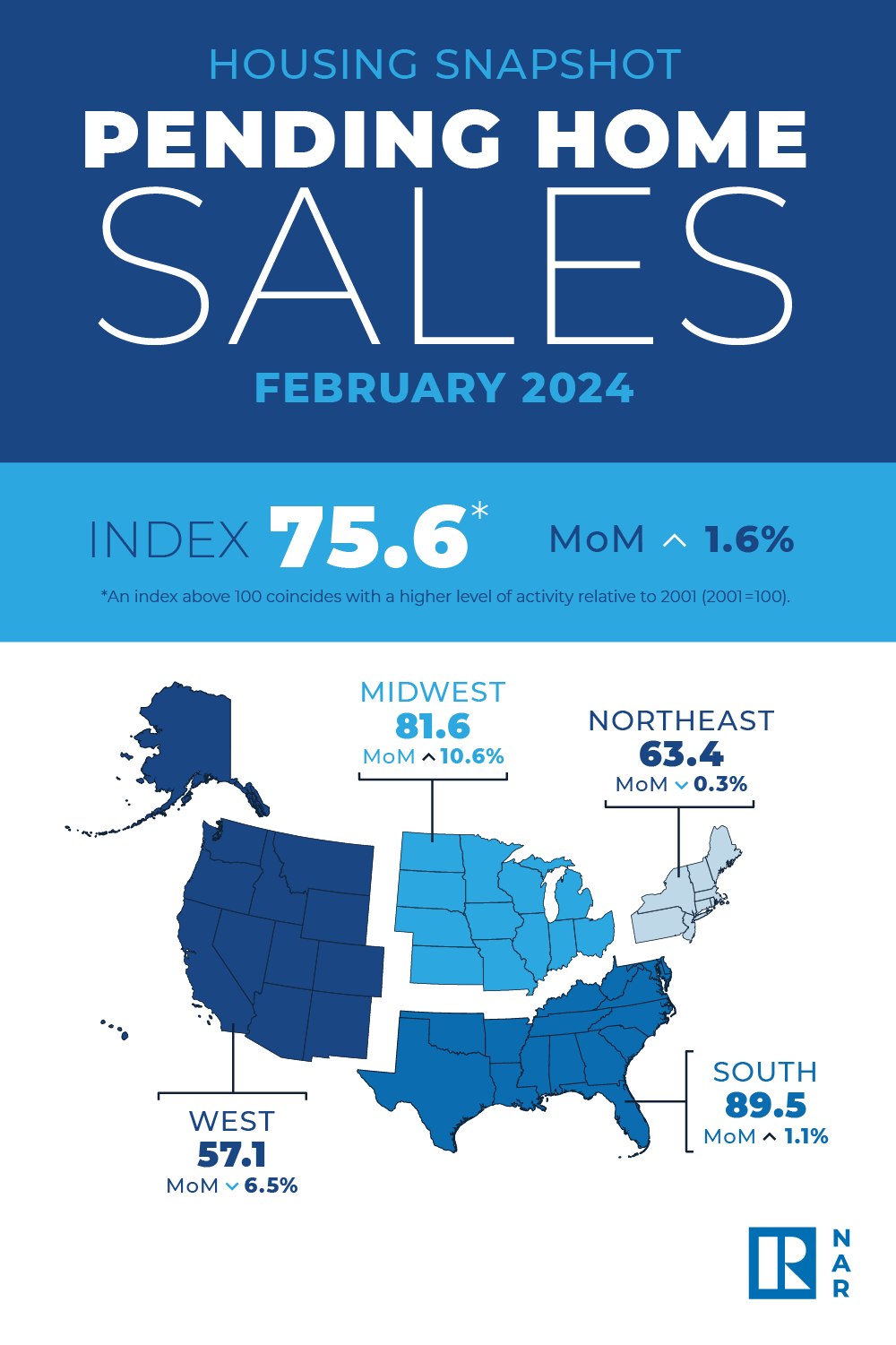Key Highlights
- Millennials surpass baby boomers and become the largest group of home buyers at 38%.
- Nearly one out of three Gen Z buyers are single females.
- Baby boomers remain the largest generation of home sellers at 45%.
Washington, D.C. – April 3, 2024 (nar.realtor) Millennials have surged ahead to become the largest group of home buyers, marking a significant shift in the housing market’s demographic landscape, according to the latest report from the National Association of Realtors®.

The 2024 Home Buyers and Sellers Generational Trends report, which examines the similarities and differences among recent home buyers and sellers across generations,1 found that the combined share of millennials, both younger (ages 25 to 33) and older (ages 34 to 43), now make up a combined 38% of the home buying market, a substantial increase from 28% last year. Baby boomers, comprising both younger boomers (ages 59 to 68) and older boomers (ages 69 to 77), saw their share decrease from 39% to 31%, relinquishing their position as last year’s largest demographic of home buyers.
“The generational tug-of-war between millennials and baby boomers continued this year, with millennials rebounding to capture the largest share of home buyers,” said Dr. Jessica Lautz, NAR deputy chief economist and vice president of research. “This notable rise is attributed to both younger millennials stepping into homeownership for the first time and older millennials transitioning to larger homes that suit their evolving needs.”
The report underscored a rise in first-time buyers across many generations, with 32% of all buyers purchasing for the first time, an increase from 26% last year. Leading the charge were younger millennials, whose proportion of first-time buyers increased from 70% to 75% over the past year. Forty-four percent of older millennials and 24% of Generation X (ages 44-58) were first-time buyers.
In parallel, the emergence of Generation Z (ages 18-24) in the housing market paints a picture of diversity and independence. While this cohort only accounted for 3% of all buyers, an impressive 31% of Gen Z purchasers were single females – a proportion significantly higher than that observed in any other generation.
“Gen Z buyers are entering the housing market, and their demographics are emerging distinctly from other age groups,” Lautz said. “More than half are single buyers, outpacing all age groups of single men and single women, and they are also most likely to identify as LGBTQ+.”
Despite these shifts in buyer trends, baby boomers remained the largest home-seller generation, accounting for 45% of all sellers in 2023. The tenure of homeownership before making a sale varied significantly by generation. While the median among all buyers was a 10-year stay before selling, older millennials typically sold their homes after just six years, contrasting sharply with Gen X, baby boomers and the Silent Generation (ages 78-98), who typically stayed in their homes for 15 years.
“Baby boomers continue to dominate the home-selling market as they make pivotal decisions regarding their retirement living situations, whether it’s right-sizing or moving closer to loved ones,” Lautz said. “Benefiting from longer periods of homeownership compared to other generations, boomers approach these transactions with substantial equity, enabling strategic housing trades.”
In the face of changing market dynamics, the enduring appeal of homeownership remains strong. This year’s report revealed that 82% of all buyers consider a home purchase a good financial investment, with this sentiment especially pronounced among younger millennials, 86% of whom echo this positive outlook.
Across all generations, nine out of ten buyers indicated they would either definitely (75%) or probably (15%) enlist their real estate agent’s services again or recommend them to others. Similarly, among sellers, 87% expressed they were likely to reuse or refer their agent.
“The universal value of owning a home transcends every generation, serving as a cornerstone for both personal prosperity and community development,” said NAR President Kevin Sears, broker-partner of Sears Real Estate in Springfield, Massachusetts. “In navigating the complexities of the market, buyers and sellers continue to rely on agents who are Realtors® for their expertise and guidance, underscoring the invaluable service they provide in bringing dreams of homeownership to life.”
Methodology
NAR mailed a 129-question survey in July 2023 using a random sample weighted to be representative of sales on a geographic basis to 189,750 recent home buyers. Buyers had to have purchased a primary residence home between July 2022 and June 2023. The survey received 6,817 responses from primary residence buyers. After accounting for undeliverable questionnaires, the survey had an adjusted response rate of 3.6%.
All information in this report is characteristic of the 12-month period ending June 2023, with the exception of income data, which are reported for 2022. In some sections, comparisons are provided for results obtained in previous surveys. Not all results are directly comparable due to changes in questionnaire design and sample size.
About the National Association of Realtors®
The National Association of Realtors® is America’s largest trade association, representing 1.5 million members involved in all aspects of the residential and commercial real estate industries. The term Realtor® is a registered collective membership mark that identifies a real estate professional who is a member of the National Association of Realtors® and subscribes to its strict Code of Ethics.
# # #1 Survey generational breakdowns: Generation Z: (ages 18-24); younger Generation Y/millennials (ages 25-33); older Generation Y/millennials (ages 34-43); Generation X (ages 44-58); younger boomers (ages 59-68); older boomers (ages 69-77); and the Silent Generation (ages 78-98).

